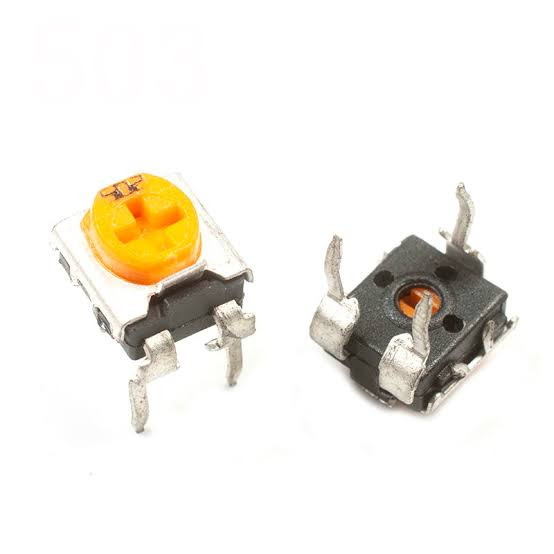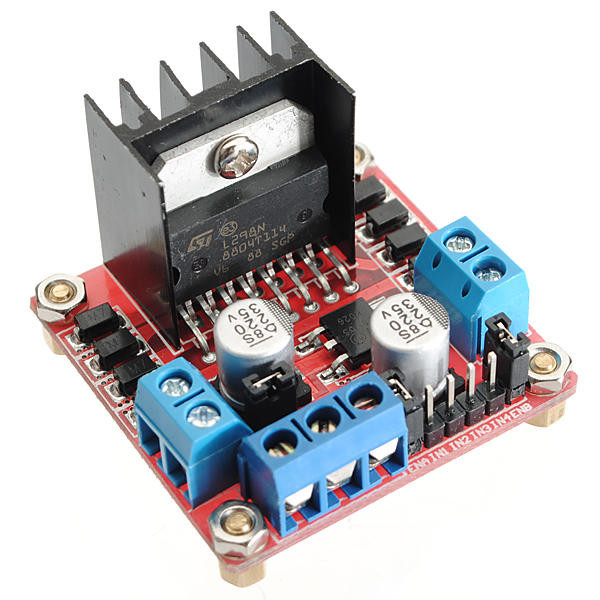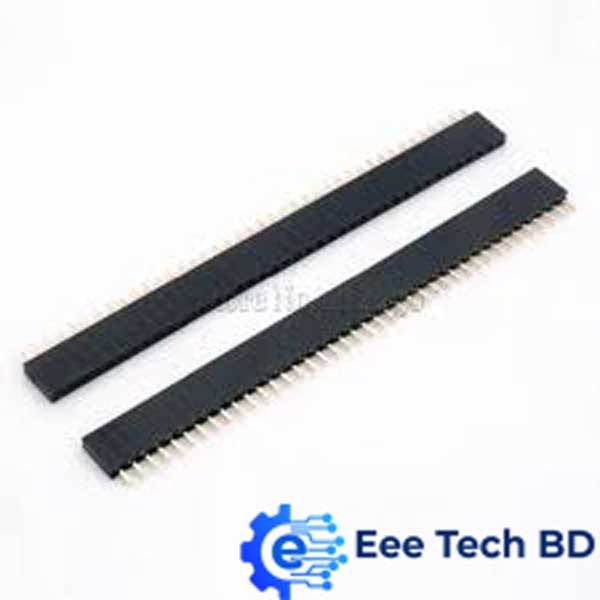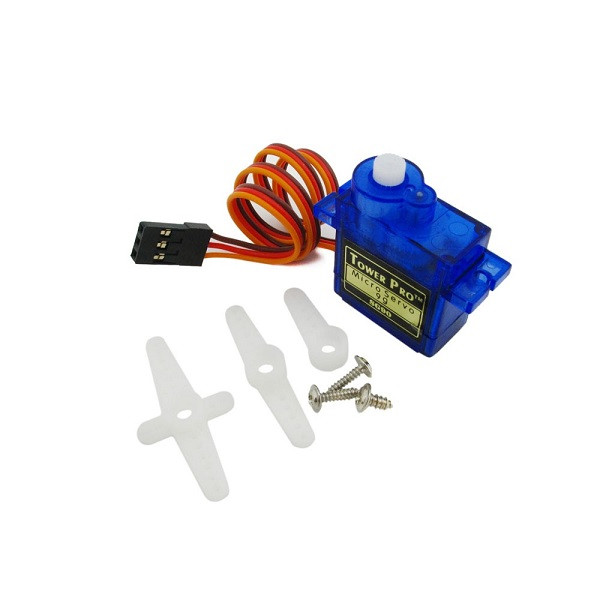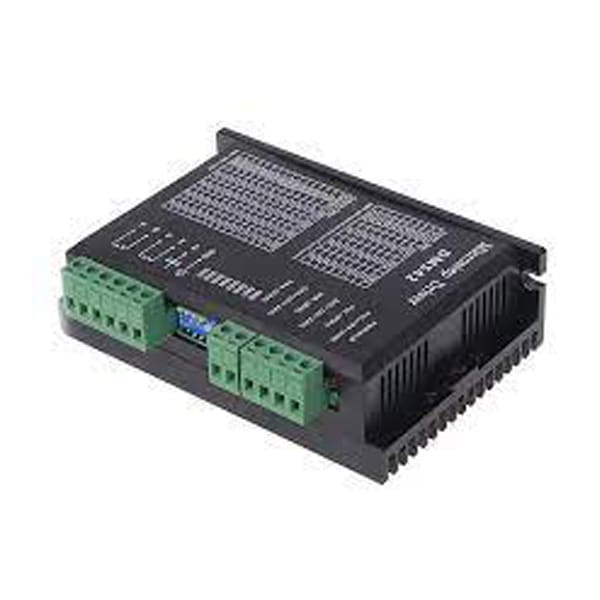

Stepper Motor Driver DM556 Digital Low-Voltage
The DM556 is a versatile fully digital stepping driver based on a DSP with advanced control algorithm. The DM556 is the next generation of digital stepping motor controls. It brings a unique level of system smoothness, providing optimum torque and nulls mid-range instabilities. Motor self-test and parameter auto-setup technology offers optimum responses with different motors and makes it easy to use. The driven motors can run with much smaller noise, generate less heat, and move smoother than most other drivers on the market.
Its unique features make the DM556 an ideal solution for applications that require low-speed smoothness. Compared to the DM442, the DM556 provides a large voltage range and higher output current to able to drive a larger variety of stepper motors. Furthermore, the DSP of the DM556 is capable of driving the motors at higher speeds (above 3000 RPM) offering servo-like performance.
Features:
- Anti-Resonance, provides optimum torque and nulls mid-range instabilities
- Supply voltage up to +50 VDC (recommended not to exceed 45 V because of “back EMF”)
- Output current programmable, from 1.4 A to 5.6 A (DM556) and 1.0 A to 4.2 A (DM542)
- Automatic idle-current reduction (in standstill mode) to reduce motor heating; function switchable (reduction rate can be software configured)
- Motor self-test and parameter auto-setup technology, offers optimum responses with different motors
- Pulse input frequency up to 200 kHz
- TTL compatible and optically isolated input
- Microstep resolutions programmable, from full-step to 25000 steps/rev
- Suitable for 2-phase and 4-phase motors
- Over-voltage, over-current, phase-error protections
Applications:
Suitable for a wide range of stepper motors of NEMA sizes 17, 23 und 34 (42 x 42 mm to 86 x 86 mm). It can be used in various kinds of machines, such as X-Y tables, engraving machines, labeling machines, laser cutters, pick-place devices, and so on. Particularly well suited for applications where low noise levels, less heat development, high speed and high precision are desired.
NOTE: NEVER disconnect or connect the motor while the power source is connected to driver and enegized!
Connections
| Pin Function | Details | Connector Image | |
|---|---|---|---|
| PUL + | Pulse signal: In single pulse (pulse/direction) mode, this input represents pulse signal, each rising or falling edge active (software configurable); 4-5V when PUL-HIGH, 0-0.5V when PUL-LOW. In double pulse mode (pulse/pulse) , this input represents clockwise (CW) pulse,active both at high level and low level (software configurable). For reliable response, pulse width should be longer than 2.5µs. Series connect resistors for current-limiting when +12V or +24V used. The same as DIR and ENA signals. |  | |
| PUL - | |||
| DIR + | DIR signal: In single-pulse mode, this signal has low/high voltage levels, representing two directions of motor rotation; in double-pulse mode (software configurable), this signal is counter-clock (CCW) pulse,active both at high level and low level (software configurable). For reliable motion response, DIR signal should be ahead of PUL signal by 5µs at least. 4-5V when DIR-HIGH, 0-0.5V when DIR-LOW. Please note that rotation direction is also related to motor-drive wiring match. Exchanging the connection of two wires for a coil to the drive will reverse motion direction.DIR signal: In single-pulse mode, this signal has low/high voltage levels, representing two directions of motor rotation; in double-pulse mode (software configurable), this signal is counter-clock (CCW) pulse,active both at high level and low level (software configurable). For reliable motion response, DIR signal should be ahead of PUL signal by 5µs at least. 4-5V when DIR-HIGH, 0-0.5V when DIR-LOW. Please note that rotation direction is also related to motor-drive wiring match. Exchanging the connection of two wires for a coil to the drive will reverse motion direction. | ||
| DIR - | |||
| ENA + | Enable signal: This signal is used for enabling/disabling the drive. High level (NPN control signal, PNP and Differential control signals are on the contrary, namely Low level for enabling.) for enabling the drive and low level for disabling the drive. Usually left UNCONNECTED (ENABLED).Enable signal: This signal is used for enabling/disabling the drive. High level (NPN control signal, PNP and Differential control signals are on the contrary, namely Low level for enabling.) for enabling the drive and low level for disabling the drive. Usually left UNCONNECTED (ENABLED). | ||
| ENA - | |||
| Pin Function | Details | Connector Image |
|---|---|---|
| + V | Power supply, 24~50 VDC, Including voltage fluctuation and EMF voltage. |  |
| GND | Power Ground.Power Ground. | |
| A + / A - | Motor Phase A | |
| B + / B - | Motor Phase B |

